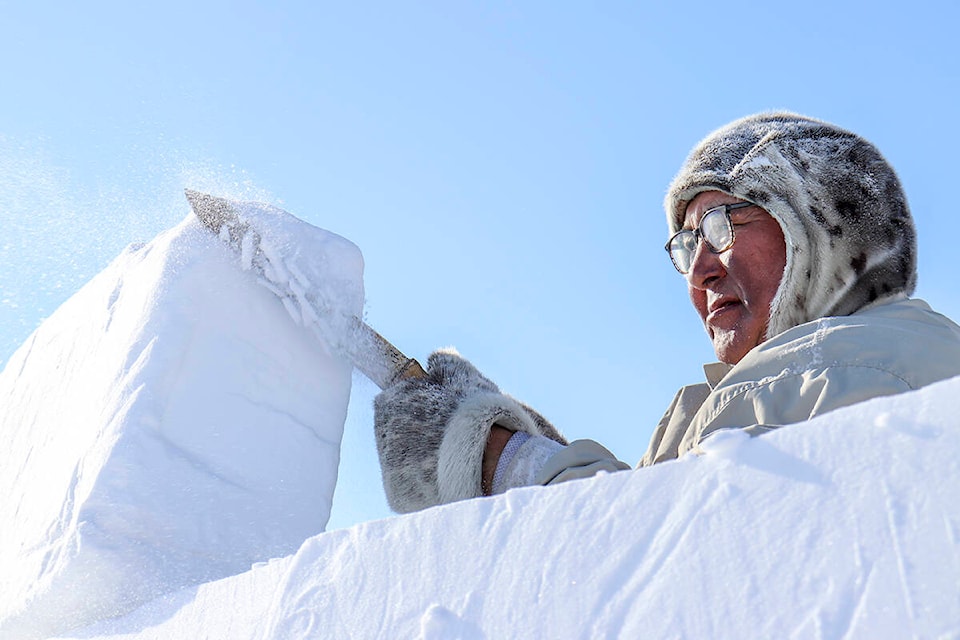Inuit have lived and hunted on the land for thousands of years, and still do in many ways, says Iqaluit Mayor and Elder Solomon Awa.
“Inuit are still living with traditions, keeping up with the environment, also keeping it clean. That’s where they get the food from, from the land,” he said, as Earth Day approaches on April 22.
Born in a sod house near Iglulik in 1959, Awa, from a young age, has spent many years on the land. He has a long history working with the Qikiqtani Inuit Association (QIA) and teaching Inuit traditional knowledge with Nunavut Arctic College.
When speaking about conservation, Awa likened the land to a store for Inuit.
“When you go to the store and look at the apple, it has brown on it, that’s not good, I’m not going to buy that. Or when you open the fridge and find a mouldy orange, you’re not going to eat that,” said Awa. “Because we’re gathering traditional food from the land, we do not want to have bad apples, we don’t want mouldy oranges. That’s how we have to keep the environment safe.”
Local leadership, particularly Inuit leadership in Nunavut’s 25 communities, is how conservation efforts are going to succeed, according to Erin Keenan, WWF’s senior manager of Arctic marine conservation.
“I would say community leadership is the most important part of all the conservation projects that we’re seeing in Nunavut right now,” she said.
Land guardians programs, such as QIA’s Nauttiqsuqtiit Inuit Stewards for Tallurutiup Imanga national marine conservation area, are important for conservation efforts as they allow Nunavut communities to be a part of the process while providing search and rescue capabilities as well as economic benefits locally.
Keenan, when talking about Earth Day, noted progress in various marine protected areas either currently in the works or already established in recent years, such as Tallurutiup Imanga and Tuvaijuittuq.
“Each (are) uniquely important, they all have unique contributions to conservation. Tallurutiup Imanga, for example, is a really important narwhal habitat but also a lot of other marine animals and species live in those waters,” she said.
On a broader scale, Nunavut and the wider Canadian Arctic are host to comparatively more pristine marine environments compared to other parts of Canada, Keenan noted.
“Establishing protected areas now is very important before we see a lot more industrial activity in the Arctic,” particularly with the onset of climate change, she said. Marine protected areas help avoid a situation where you’re “fighting to take back space” from other activities, she added.
Some of these protected areas are extremely important in the context of climate change, such as the Tuvaijuittuq, north of Ellesmere Island.
“That area is particularly important because we’re predicting it’s where multi-year sea ice is going to last the longest as we look at how sea ice is going to be affected by climate change,” said Keenan.
More broadly across Nunavut, sea ice is slowly in decline due to climate change. With less sea ice comes more habitat for outside species, such as killer whales that hunt Arctic marine life such as narwhals — prey they normally couldn’t access with year-round sea ice.
Less sea ice in the summer also presents more opportunities for fishing and shipping vessels, contributing to underwater noise as well as additional risks of oil spills.
Many can look up to Nunavut when it comes to environmental leadership, added Keenan.
“Nunavummiut are already doing quite a lot for the planet,” she said.
New protected areas, local community leadership around conservation and the extensive work done on the Nunavut Land Use Plan — one of the largest of its kind — are just some of ways Nunavut is leading environmentally.
Awa said there’s always more people can do to help the environment, and not just on Earth Day.
“When you go to the store, don’t put (groceries) in a plastic bag, use a reusable bag. We can do a lot for the protection of the environment but also keeping clean,” he said. “We just need to move forward and change it to non-plastic bags. Anything (one-time use) plastics, we can replace it with a friendly material.”
When talking about Earth, Awa said, “If we don’t take care of it, it’s not going to take care of us.”
